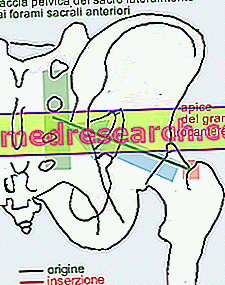Related articles: Listeriosis
Definition
Listeriosis is an infectious disease caused by the bacterium Listeria monocytogenes, widely distributed in the environment. This micro-organism is found, in particular, in soil, forages, surface waters and fecal material.
The infection is contracted mainly through the consumption of contaminated, raw or cooked foods (dairy products, ready-to-eat vegetables, meats, etc.) and is favored by the ability of L. monocytogenes to grow and survive the usual temperatures of refrigerators.
Man can contract listeriosis also through direct contact with infected animals (cattle, sheep and goats can be carriers of the pathogen) and their slaughter. Although contaminated foods represent the main source of infection, other modes of transmission should not be underestimated, including vertical (mother-child) and nosocomial.
Compared to other food-borne diseases, listeriosis has a modest incidence, but can cause life-threatening complications (mortality rate: 20-30%). Most cases are sporadic; however, outbreaks have also been reported.
The people most susceptible to Listeria infections are the elderly, pregnant women, newborns and immunocompromised subjects (eg cancer patients and AIDS patients). The most important predisposing factor in adults is glucocorticoid therapy.
Most common symptoms and signs *
- Miscarriage
- Bacteremia
- Diarrhea
- Dehydration
- Abdominal pain
- Muscle pains
- Temperature
- Swollen lymph nodes
- Headache
- Meningitis
- Fetal death
- Loss of balance
- Weight loss
- Stiffness in the muscles of the back and neck
- Thirst
- Confusional state
- He retched
Further indications
In humans, listeriosis can give rise to mild or invasive systemic forms.
In the first case, the symptomatology is flu-like and gastroenteric (typical of food-borne diseases), therefore fever, chills, headache, muscular pain, nausea and diarrhea appear.
The invasive form, on the other hand, is due to the spread of infection from the intestinal tissue to other body areas (bloodstream, CNS, heart and uterus); the manifestations vary according to the affected organ and include skin reactions, bacteremia, encephalitis, meningitis, endocarditis and peritonitis.
If contracted during pregnancy, listeriosis increases the risk of chorioamnionitis, spontaneous abortion, premature birth, intrauterine death and serious neonatal diseases.
Infections are diagnosed with the isolation of L. monocytogenes from blood culture or culture of the cerebrospinal fluid.
The therapy involves the administration of ampicillin, often associated with aminoglycosides. Alternatively, it is possible to use the combination of trimethoprim-sulfamethoxazole.
As regards prevention, it is advisable to adopt some simple behavioral rules, valid for all food poisoning:
- Cook the food well, so that all the parts (even the innermost ones) reach a temperature of at least 70 ° C;
- Consume food immediately after cooking;
- Heat "ready-to-eat" foods from supermarkets, delicatessens and rotisseries at high temperatures;
- Avoid consuming unpasteurized milk;
- Thoroughly wash raw fruits and vegetables;
- Avoid contact between raw and cooked foods;
Wash your hands thoroughly with soap and water after touching raw foods and using a detergent to clean the utensils, containers and surfaces that have come into contact with these foods.



